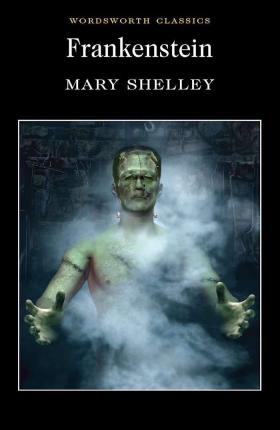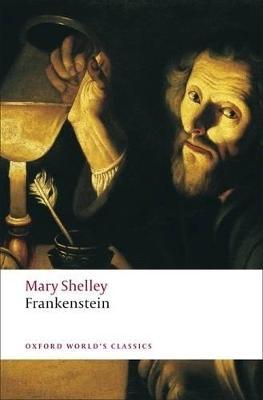
Author: Mary Shelley
Description: A gothic horror story that spawned the famous Monster, often wrongly referred to as Frankenstein, which is actually the name of his creator/father.
Book length: Medium
Rating: ⭐⭐⭐⭐⭐
The Scary Classic
‘It’s Alive!’
As soon as you hear that sentence, you know you are talking about Frankenstein. We all heard it countless times, yet interestingly enough, this is not a scene from the book! This line was popularized in the 1931 film by James Whale, where Boris Karloff plays the iconic Monster. The other very common misconception is that Frankenstein is the name of the monster, while actually The Monster has no name, and the book title refers to Victor Frankenstein, the scientist who created it.
So despite the story’s enormous popularity, people still wrongly use the scientist’s name to refer to The Monster. At the same time, the human Victor Frankenstein can through his actions be interpreted as the metaphorical monster in the story…Isn’t that very interesting?
Story Background
Not all authors who produce great books have interesting lives, but Mary Shelley definitely had one. Both of her parents were writers, her mother dying shortly after Mary was born. When she was 16, she ran away with her future husband Percy Shelley, the now famous English poet. By the time she wrote Frankenstein at age 19, she already had her first two children. Her first child died within a month after birth, which for sure influenced some of her writing in Frankenstein.
In 1816 Mary, Percy and their son traveled to Geneva, where they planned to spend the summer together with Lord Byron. At that time the party amused themselves with German ghost stories and Lord Byron proposed that they each write a ghost story. The result of this contest among friends was Mary’s Frankenstein! One big source of inspiration for Mary were Luigi Galvani’s experiments on frog legs.
Interestingly enough, another story from the same contest was John William Polidori’s ‘The Vampyre’, which is often viewed as the forefather of the romantic vampire genre. What a competition!
What is the Book About?
As I like to keep it spoiler-free, I will not outline the complete story, for that we already have nice Wikipedia articles. Most people are familiar with the basics – the story follows Victor Frankenstein, a young scientist who manages to create a sapient Creature out of corpses using unconventional scientific methods. After that, he realizes what he created and we follow Victor and The Monster fighting with the consequences of that creation. The novel explores themes of science vs nature, identity, revenge, obsession, and what it means to be human.

Some Possible Interpretations
Since most people associate Frankenstein with the ‘Monster movie’ genre (which can be quite trashy depending on the adaption), I get the feeling that the novel doesn’t get the recognition it deserves in terms of how complex it is and how important themes it covers.
It’s a story about creation, heavily linked to two other stories: the one of Prometheus and John Milton’s Paradise Lost. This creation can be analyzed from multiple angles: not only does Victor create the Monster in the story, but Mary Shelley as an author creates a novel with an unorthodox and experimental narrative, so the books itself can be viewed as some kind of ‘monster’. In that sense, the novel can be viewed as a birth metaphor or as a general problem of creating a literary work.
It was written in an age of scientific discovery where ethical questions were not asked in science, and Mary Shelley gives us a taste of what could happen when humans overstep. That is an important question still relevant today in the fields of gene therapy and cloning. It cautions us to take a step back from blind science and ask the question: where does our work land on the moral scale?
Another interesting part of the story is how people automatically reject and fear the Monster just based on its looks and how alienated it feels. The Monster struggles with emotions that we all struggle with at some point in our lives, and that is what makes the story timeless.
Language and Writing Style
Frankenstein is the prime example of the Romantic (with a capital R) novel. It is very descriptive with long winded sentences. There is a heavy focus on emotion and it uses metaphors and analogies to discuss themes of life and death. It is written as an embedded narrative, i.e. a story within a story. The novel is divided into 3 volumes which kind of follows a play structure with 3 acts.
My Reading Experience & Thoughts
I really enjoyed reading Frankenstein. It is a classic for a reason, and I would say a good choice for someone looking to get into classics. It is not too long and you get all the quality content a novel can give you packed into a fun sci-fi story. I was surprised not to see some classic scenes that are associated with the character in pop culture, but never felt like this took something out of the experience.
One thing I didn’t like was the pacing at some points. I really wanted to see what happens next and instead had to read several chapters of backstory. It’s not that the backstory was bad (it was actually important for the story); I just wished it was executed a bit more smoothly. The side characters were also a bit lacking for me, but considering the main narrative, they serve their roles well.
Overall I think it reads quite nicely so you shouldn’t find it difficult to go through it, but this may depend on some translations.
Editions
Here I have included covers of some popular Frankenstein editions. I read my Croatian edition by ‘Sareni Ducan’ (which translates to ‘Colorful Store’) which does not have a particularly inspiring design. However the format, print and paper quality were great so I decided to go with that.
My personal favorite cover is the Penguin English Library version with the light color scheme and hearts. I think it captures the duality of beauty and ugliness in the story really well. The print, however, can be a bit lacking – thinned out at some letters, thicker at others, and overall not completely crisp, so I would personally not recommend it. I noticed that problem with some Penguin editions, while other classic editions seem to always have a clear, crisp print. With such a popular classic there are plenty of options, so picking one you like should not be a problem.









Conclusion & Verdict
Few books have left such a big impact on literature and pop culture as Frankenstein. It was written under interesting circumstances, the author explores compelling themes that are just as relevant today, and the fact that the novel defined the science fiction and horror genres is truly amazing. I found the pacing at some points a little off-putting, and I did not really care for the side characters. However, since Victor and the Monster are the focus of the story, this was not a big issue for me. Considering the popularity of it’s main character, it’s length, and all the timeless themes it covers, Frankenstein is an easy-to-recommend classic that you should definitely put on your reading list.
Rating: 5/5
Pros
+ Interesting backstory
+ Defined the sci-fi novel genre
+ Explores compelling themes
+ A great number of possible interpretations
+ Not too long
Cons
– Some pacing issues
– Supporting characters not very interesting
Thank you, Dominik, on your comprehensive review. I enjoyed every bit of it.
Completely agree on the pacing issue, though!
Thanks Domenika! Glad you liked it!
Nice to see and read your review! Completely agree with you.
Thanks Lorenzo!
Vidis, ne bi mi nikad palo na pamet citati Frankensteina, ali sad mozda i budem 🙂 super recenzija, detaljno, a citko!
Hvala ti Mirna! Drago mi je da ti se svidja!